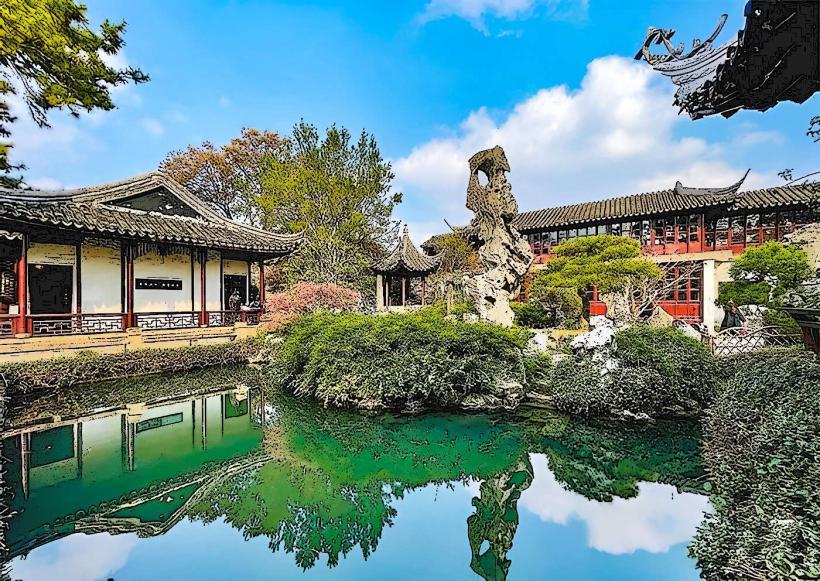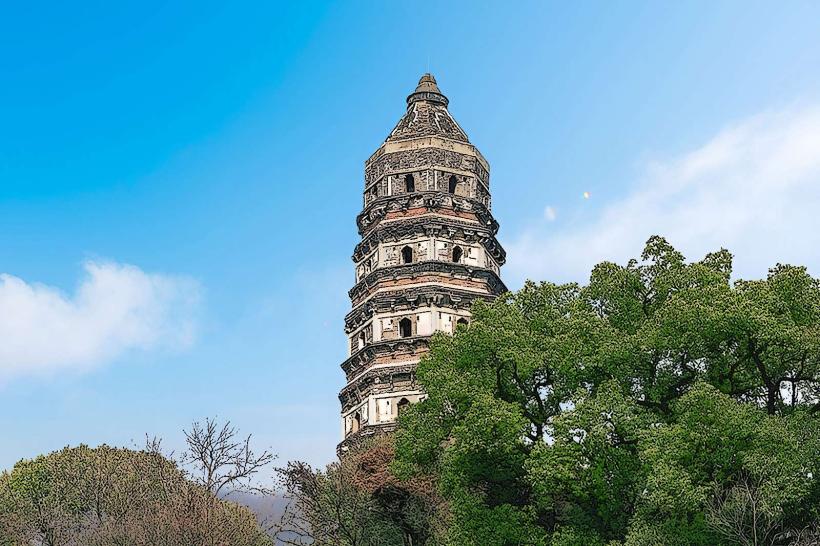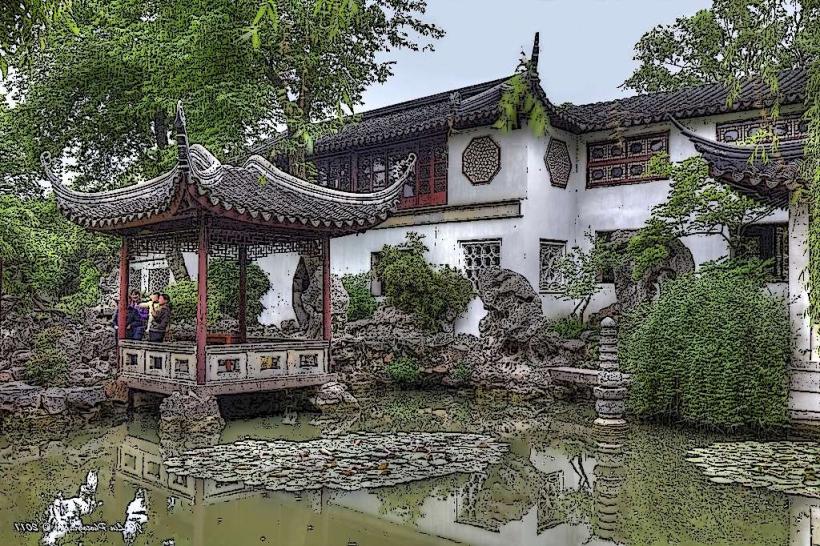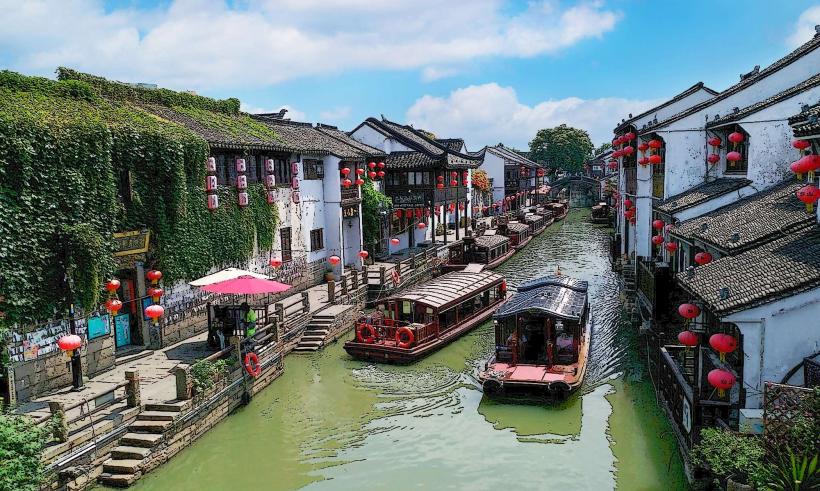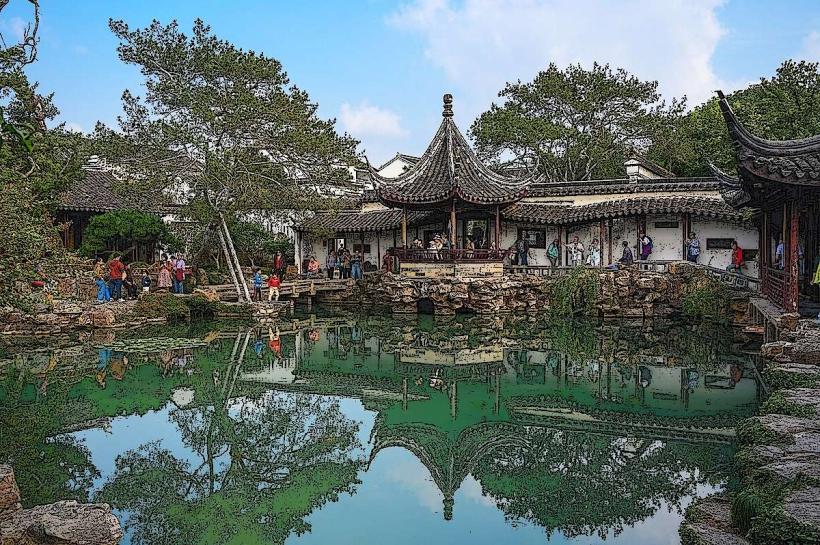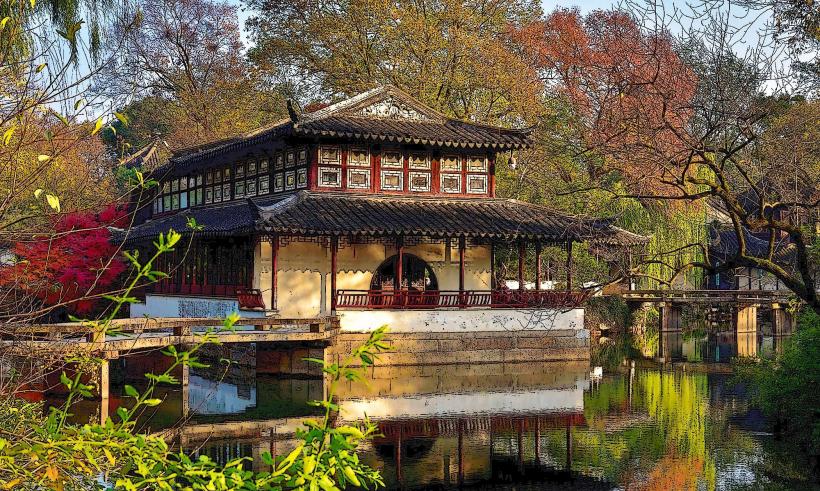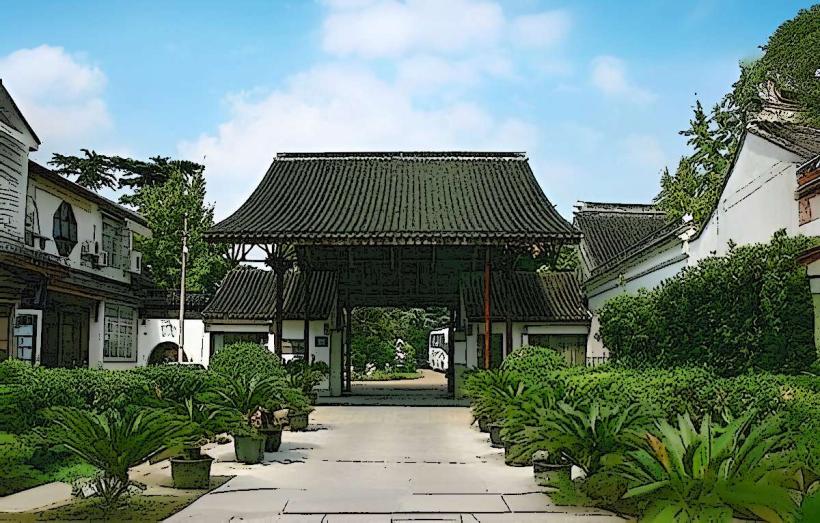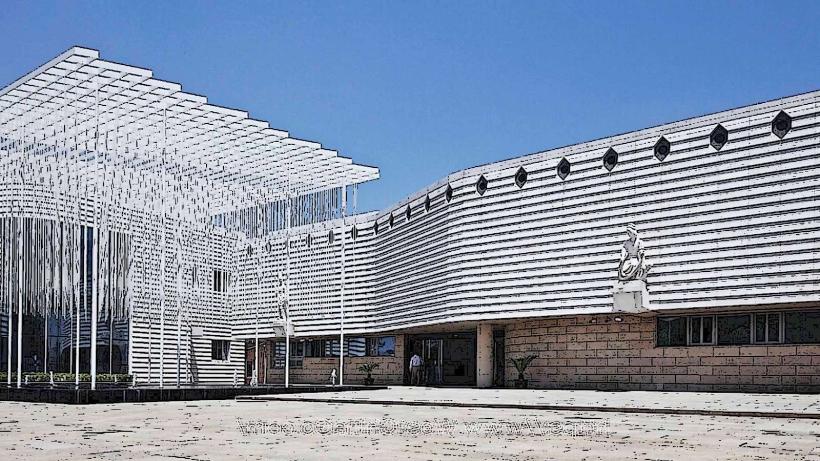Information
City: SuzhouCountry: China
Continent: Asia
Suzhou, China, Asia
Overview
Suzhou sits in Jiangsu Province, in eastern China, and ranks among the nation’s most treasured cities for its deep history and rich culture, as well as called the “Venice of the East,” the city brims with classical gardens, winding canals where lanterns glow at dusk, a thriving silk trade, and centuries of layered history.For more than 2,500 years, Suzhou has thrived as a hub of Chinese culture, art, and trade, its willow-lined canals helping make it one of the country’s most breathtaking and prosperous cities, while suzhou sits in the Yangtze River Delta, about 100 kilometers west of Shanghai, where the air often carries a soft mist from nearby waterways.Famous for winding canals, graceful stone bridges, and serene classical gardens where lotus flowers drift on still water, it’s earned a spot on the UNESCO World Heritage List, meanwhile the city sits near Lake Tai (太湖), one of China’s largest freshwater lakes, and its web of winding rivers once carried boats heavy with silk and grain, shaping it into a vital trading hub, under certain circumstances Suzhou’s story begins in 514 BC, when it rose as the capital of the Kingdom of Wu during the Spring and Autumn Period, its streets first laid out beside the winding canals, as a result over the centuries, it grew into a thriving hub of silk weaving, bustling trade, and lively cultural life.During the Tang Dynasty (618–907 AD), Suzhou bustled with trade, its markets alive with silk merchants and the scent of fresh tea, therefore during the Song Dynasty (960–1279 AD), the era gained fame for its graceful gardens and vibrant arts, from winding stone paths to delicate ink paintings.During the Ming and Qing dynasties (1368–1912 AD), Suzhou thrived as a hub of silk weaving-its looms clicking deep into the night-and a gathering area for scholars and poets, and today, Suzhou stands among China’s most advanced cities, where centuries-classical gardens bloom beside sleek glass towers.Believe it or not, For centuries, Suzhou has been known for its poetry, graceful classical gardens, shimmering silk, and the soft notes of traditional music drifting through its streets, on top of that the city’s beauty stirred the imagination of many renowned poets and scholars, from Fan Chengda (范成大) to Tang Yin (唐寅), who once wrote of its misty bridges.Suzhou embroidery (苏绣) is one of China’s most exquisite and highly prized arts, with stitches fine enough to catch the light like silk threads in morning sun, while for more than a thousand years, Suzhou has been at the heart of China’s silk trade, where looms click softly in workshops tucked along narrow canals.Pingtan (评弹) blends storytelling with gentle plucks of the pipa and the soft rise of a singer’s voice, not only that kunqu Opera (昆曲) is one of China’s oldest and most graceful art forms, with lilting melodies and flowing silk robes, and it’s honored on UNESCO’s heritage list, for the most part Suzhou, part of the Wu Chinese-speaking region, is known for its soft, melodic dialect-a gentle lilt that sets it apart from Mandarin, to boot suzhou’s best-known treasures are its classical gardens, with winding stone paths and quiet ponds, but you’ll also find ancient temples, shaded canals, and sleek modern sights.Somehow, One, and the Classical Gardens of Suzhou (苏州古典园林) rank among the finest works of Chinese landscape design, with winding stone paths and still ponds, and they’ve earned a setting on the UNESCO World Heritage list.Among the best-known is the Humble Administrator’s Garden (拙政园), the largest in Suzhou, with still ponds, elegant pavilions, and weathered rock formations, also Lingering Garden (留园) is known for its graceful rockeries, airy halls, and quiet courtyards where footsteps echo on stone.Master of the Nets Garden (网师园) is petite but beautifully crafted, with winding paths and still ponds that make it perfect for a peaceful visit, equally important lion Grove Garden (狮子林) is known for its twisting maze of weathered stone, where jagged shapes rise like crouching lions.Mind you, Number two, subsequently suzhou is ringed by charming water towns-ancient villages strung along quiet canals where stone bridges arch over rippling water.Zhouzhuang (周庄), often called “China’s First Water Town,” is a maze of stone bridges, narrow lanes, and weathered wooden houses where the air smells faintly of the canal, not only that tongli (同里) is a quiet town laced with miniature stone bridges, where the water reflects timeworn willows-perfect for capturing in a photo.Luzhi (甪直) is a quiet, lesser-known town where narrow stone lanes wind past well-preserved Ming and Qing buildings, furthermore number three, perhaps The Grand Canal (京杭大运河) is the world’s oldest and longest waterway, stretching from Beijing to Hangzhou and glinting under the morning sun, alternatively on a boat cruise, you’ll glide past ancient stone bridges, whitewashed houses glowing in the sun, and markets alive with chatter and the smell of fresh spices.Number four, therefore Tiger Hill (虎丘), Suzhou’s best-known historic landmark, is home to the Leaning Pagoda (云岩寺塔), its weathered bricks tilting like “China’s Leaning Tower of Pisa.”It’s famous for the Sword Pool (剑池), where the King of Wu is said to have hidden his legendary blades beneath the still, green water.Five, as a result the Suzhou Museum (苏州博物馆), with its crisp white walls and quiet courtyards, was designed by I. M, simultaneously pei.If I’m being honest, M, then pei, the celebrated Chinese-American architect who once sketched designs on napkins, gained worldwide fame for his bold, modern creations.It’s home to a vast collection of calligraphy, delicate porcelain bowls, smooth jade, and centuries-ancient artifacts, as a result number six.Shantang Street (山塘街) winds along the Shantang Canal, buzzing with life beside rows of wooden tea houses, heritage stone residences, and shopfronts fragrant with fresh jasmine tea, as a result it’s best to go at night, when lanterns cast warm light across the rippling water.Seven, and panmen Gate (盘门) has stood for 2,500 years, once guarding Suzhou’s vintage city walls with its heavy stone arches.It features the Wu Gate Bridge (吴门桥) and the Ruiguang Pagoda (瑞光塔), where weathered stone meets quiet water, not only that suzhou, one of China’s wealthiest cities, blends its centuries-vintage silk workshops with sleek, cutting-edge tech hubs, moderately Suzhou still leads the way in silk weaving and exports, with looms clicking softly in workshops across the city, as a result high-Tech Zone (苏州工业园区, SIP) is one of China’s leading tech hubs, where glass towers house multinational companies from around the world.E-commerce and artificial intelligence are booming here, fueled by their closeness to Shanghai’s busy ports and endless stream of customers, after that suzhou cuisine is celebrated for its light, slightly sweet flavors, often featuring tender freshwater fish, plump shrimp, and whatever seasonal produce is at its peak.Actually, Suzhou-style mooncakes (苏式月饼) are a flaky, sweet twist on the classic, with layers that crumble softly at the first bite, then sweet and Sour Mandarin Fish (松鼠桂鱼) – a celebrated dish where the chef scores the flesh so it fans out like a squirrel’s tail.Braised Pork with Tofu Skin (百页结烧肉) – tender pork melts alongside silky knots of tofu skin in a deeply flavorful, savory broth, as well as suzhou Noodles (苏州面) are delicate strands in a clear, gently sweet broth, sometimes topped with tender eel or slices of savory pork.Crab Roe Dumplings (蟹粉小笼包) are Suzhou’s take on soup dumplings, each tender wrapper hiding a burst of rich crab meat and golden roe, as well as suzhou’s transport network runs smoothly, so getting around is simple-whether you’re hopping on a quiet canal boat or catching a expeditious train.Hop on the high-speed rail and you’ll be in Suzhou from Shanghai in just 25 minutes-barely enough time to finish a cup of tea, subsequently suzhou Metro (苏州地铁) is a prompt‑expanding subway system that links the city’s top spots, from bustling marketplaces to serene classical gardens.Boats and canals offer a classic way to witness the city’s waterways, gliding past stone bridges and rippling reflections, as a result biking in Suzhou is a pleasure, with tree-lined paths winding past canals and quiet gardens.Suzhou has a humid subtropical climate, with four clear seasons-from damp, chilly winters to summer days that cling to your skin, as well as spring, from March to May, is the perfect season to wander through gardens bursting with radiant tulips and fresh green leaves.Summer-heat shimmers on the pavement, and the air smells faintly of cut grass.
Author: Tourist Landmarks
Date: 2025-10-29
Landmarks in suzhou


